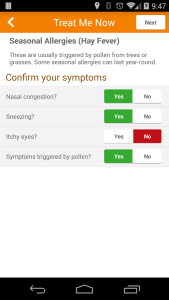One Medical: The Doctor’s Office. Reinvented.

One Medical Group is bringing back service and patient-centricity to healthcare by focusing on design, technology, and building a great team of doctors!
One Medical Group – The Doctor’s Office. Reinvented.
One Medical Group, at it’s core, is a concierge primary care provider but at a much more affordable price tag. The business model relies on the assumption that consumers would pay a sum over and above insurance premiums to ensure a more pleasant and efficient medical experience. And One Medical seems to have found its niche! Traditional concierge medicine offerings do not accept insurance and come at hefty price tags that range from $2000-$6000/year. One Medical Group offers concierge medicine services but they differ in their business model in that they accept most major health plans (including Medicare) and charge a much lower annual subscription fee of $150 to $200 depending on location (1).
Headquartered in San Francisco, the company was founded by Thomas X Lee in 2007, after realizing how inefficient an average doctor’s visit could be. Patients may wait days to be able to schedule with their Primary Care Provider (PCP). If they’re lucky enough to be able to get time between 9am-4pm to see a doctor, they spend anywhere between 15-45 minutes filling out paperwork and then some more waiting for the inevitably late physician to see them for all of 12 crucial minutes.
One Medical is successful because it leverages technology to solve the pain points of their patients as well as their providers. With One Medical, patients can schedule same day appointments online, fill out their paperwork online, get prescription refills, and lab results digitally, as well as have email and virtual access to their doctors 24/7. Longer appointments, combined with technology tools that allow access to a physician make this a much more seamless and effective physician – patient relationship. It also doesn’t hurt that their physician offices look more akin to a hotel lobby/spa (they actually offer spa water too!) than your traditional white-walled, snot-covered PCP office.

To bring their vision of providing quality care that is accessible to most people, they rely on key elements of their operating model:
Labor: One Medical attracts top-caliber physicians who are more interested in quality care than quantity care. Providers at One Medical see 16 patients per day, which is significantly lower than the national average of 25 patients per day (2). Traditionally, providers are incentivized to drive volume because insurance companies only reimburse them on a per office visit basis. Moreover, in traditional primary care services, you can’t access your doctor via email or a virtual network because they’re only reimbursed on a per office visit basis, creating a sub-optimal patient care experience. Under this model, physicians use part of the subscription fee to be able to provide additional services to their patients. It is estimated that concierge medicine is usually revenue neutral to traditional primary care practice (3). Therefore, the business model aligns with the hiring processes in that it self-selects physicians who wish to have a closer relationship to their patients and are comfortable being accessible even after hours.
PP&E: Realizing that most patients have to take time out of their working day to see a doctor, One Medical has a policy of placing their clinics in easily accessible metro areas, close to where most people tend to work. For example, in Manhattan, they have clinics in Midtown East, Flatiron, and the financial district – all neighborhoods with a high concentration of office buildings. While these locations lend themselves to higher costs, they are aligned with their business model of providing the most seamless patient experience.
Lower Overhead Costs by Adoption of Technology: One-Medical is successfully able to lower overhead costs by using technology to automate processes. For example, the number of administrative staff at a One Medical location is usually half of what you will see at a traditional clinic because scheduling is done online (4).
Moreover, technology solutions that allow patients to get prescriptions for standard conditions over email, or allow teleconsultations for brief questions, keep patients out of the office, thus making it easier to provide open slots for the patients that need to see a doctor.




I utilized One Medical while living in Boston last year and can absolutely back up Pia’s comments that the firm’s emphasis on technology provides it competitive advantage. Never before have I been able to so easily refill an Rx or get provider advice on a medical condition. Surprisingly though, there seems to be very little promotion of the firm in the market and this could lead to an erosion of the consumer base to competitors if not addressed. I would be interested to learn what efforts within the operating model look to address this gap.
Good observation, Rex! You’re right. So far, the firm had relied on word-of-mouth advertising supplemented by referral bonuses etc. And had seen explosive growth in membership sign-ups! Going forward, they have made a move into enterprise i.e. One Medical is now offered as a perk by employer groups as part of the health benefits of a company. I believe they have been successful in signing up several enterprise clients – although the exact numbers/growth is not public. I believe that this is the right move in order to grow and also to cement their position against competition, to your point.
Great post, Pia! My biggest pain point with my doctor in New York was that I could not reach him for quick questions outside of an appointment. I am glad to see One Medical is trying to solve this and other pain points.
How do insurance companies view One Medical? Do they have any issues with getting reimbursement for visits and procedures?
I’d be very curious to learn how One Medical’s revenue breaks down between membership fees and medical service fees. For small family practice PCPs, overhead in labor (MAs) is only a tiny portion of total cost. How One Medical pays its doctors competitive salaries with < 20 visits/day and sky-high rent in urban areas with its posh lobbies is baffling.
Phenomenal post Pia!
I have been a loyal customer of One Medical Group since graduating college in 2009 and cannot envision a life where I’d have to go back to a more traditional doctors visit experience. One additional perk I would like to highlight is that since there is a network of offices you could visit (NYC, SF, Washington, D.C., Boston) that all bill under the same entity you are not limited to just seeing one doctors in NYC or Boston. The convenience of being able to see a doctor in Washington, D.C. and then having a follow up appointment with another in NYC and a final follow up in Boston means that you never have to skip a beat or adjust your life to address any health concerns. During the summer before b-school I frequently traveled between NYC, Boston and Washington D.C. and being able to pick up where I left off each time I went to another doctor in another city meant I could complete the items on my HBS pre-matriculation checklist on time without having to adjust my travel schedule. The convenience factor related to One Medical Group is everything!
Great post Pia! I had not heard about One Medical Group before, but it sounds like a very interesting model. The business model definitely addresses pain points of many patients, and its patient-centric business model is picks up on one of the key trends within the healthcare market today. I do, however, agree with Lynn in that the lower than average visits per day is concerning for revenue purposes, so I would be interested to see the cost breakdown. On the other hand, I can see how their reliance on technology will drive large amounts of cost savings and also differentiate them amongst competitors going forward.